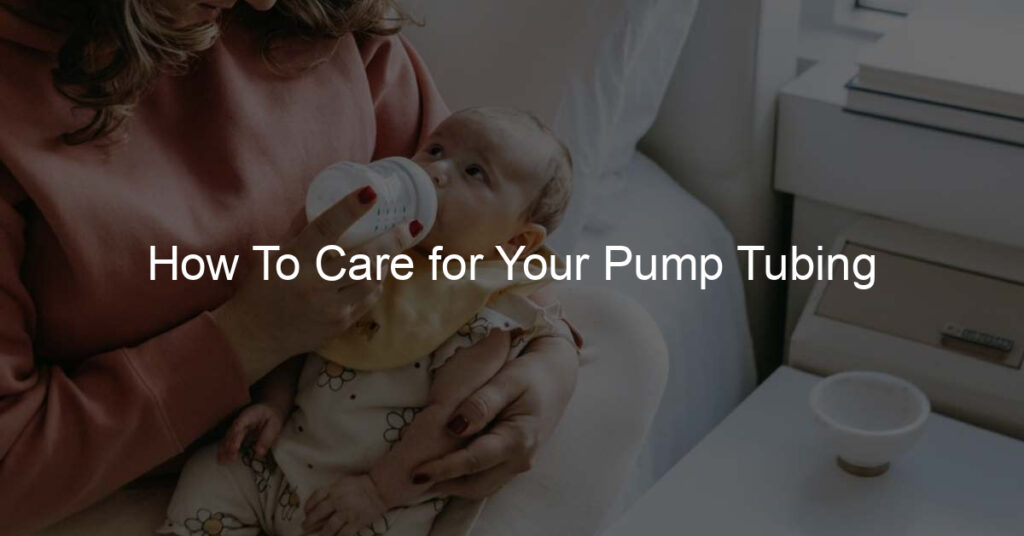If you’re a mother who uses a breast pump, you know that taking care of your breast pump and its parts is important. But did you know that there are proper ways to care for your breast pump tubing? In this blog post, we’ll share some tips on how to clean and store your tubing so that it stays in good condition. Read on to learn more!
Do I need to clean my breast pump tubing?
Many new parents never imagine needing to clean a breast pump, but it is essential. Breastfeeding can offer many benefits to babies, but it can also be difficult for a mother and her body.
Cleaning the tubing is an important part of properly caring for both the mother and her baby. Regular cleaning will help to keep the system hygienic and free from bacteria or mold that can cause health issues. Additionally, properly cleaning the tubing will help to ensure that every drop of expressed milk reaches your baby safely.
This may mean an extra step in caring for your breast pump, but with even just a few minutes dedicated each day, you can ensure that both you and your baby stay safe and healthy.
How often do you clean breast pump tubing?
Cleaning breast pump tubing is an important step in ensuring your baby gets safe, clean milk. Breast pumps are naturally a more favorable way to pump and store milk than hand expression, but it’s equally important to minimize bacteria in tubes.
Fortunately, it doesn’t have to be too time-consuming. Depending on factors such as how often you use the pump, it’s generally recommended to disassemble parts and thoroughly rinse the tubing after each use. If possible, sterilize weekly with boiling water or an electric steam bag for deeper cleaning. Taking proper care of your breast pump will make sure that the milk you provide your bundle of joy is both healthy and hygienic.
How long does breast pump tubing last?
Breast pump tubing is a necessary item for the safe and efficient use of a breast pump, but it’s important to know how long yours can last. Generally speaking, pump tubing can last up to three to six months, but should be replaced sooner if any cracks or defects are visible.
Even though replacing your pump tube may seem like an unnecessary expense, investing in a quality new one will ensure you get the full benefits of pumping and help protect against harm caused by bacteria or other contaminants due to cracks in the tube. It may only require a light cleaning or scrub now and then, but regularly inspecting your tubing rather than relying on it lasting a certain length of time is key for hygienic reasons.
Can you reuse breast pump tubing?
Reusing breast pump tubing is a common mistake many new mothers make in trying to save money. While the tubing may be easy to clean and can be used multiple times, this could lead to bacterial growth and contamination of the milk you are pumping.
In addition, after frequent use, the tubing loses its durability, resulting in less effective suction. Additionally, reusing breast pump tubing might also void your warranty from some manufacturers. So when it comes to your baby’s well-being, it is always best to invest in new tubing for your breast pump at least once per year.
How can I dry my breast pump tubing fast?
If you’re a nursing parent, you know the importance of keeping your breast pump tubing clean. But if you need to use your breast pump again quickly, you might wonder how to get it dry fast. The good news is, a few simple techniques can help speed up the process significantly.
Try using a fan to blow air onto the tubing while drying with a soft cloth. Eliminating moisture can be further accelerated by using mild soap and freshly boiled water, as well as an ultraviolet light source like sunlight or a lamp that has UV-C bulbs. With these methods, you can have your breast pump tubing clean and dry in no time!
Looking Ahead: How To Care for Your Pump Tubing?
Caring for your breast pump tubing is an important part of ensuring that your machine remains reliable and functions optimally. Regular cleaning with warm water and a bottle brush will help to eliminate any possible risk of bacteria or mold build-up due to milk residue.
Additionally, storing the tubes in a zip-lock bag or box can help protect them from damage, dust, and other debris. With regular and proper care, your tubing can last even longer than expected! Furthermore, keeping the parts sanitized will make sure you are providing neither germs nor bacteria to your little one. Therefore, in conclusion, taking adequate measures to clean and protect your breast pump tubing is essential for your pump’s longevity as well as for providing healthy milk for your baby.














